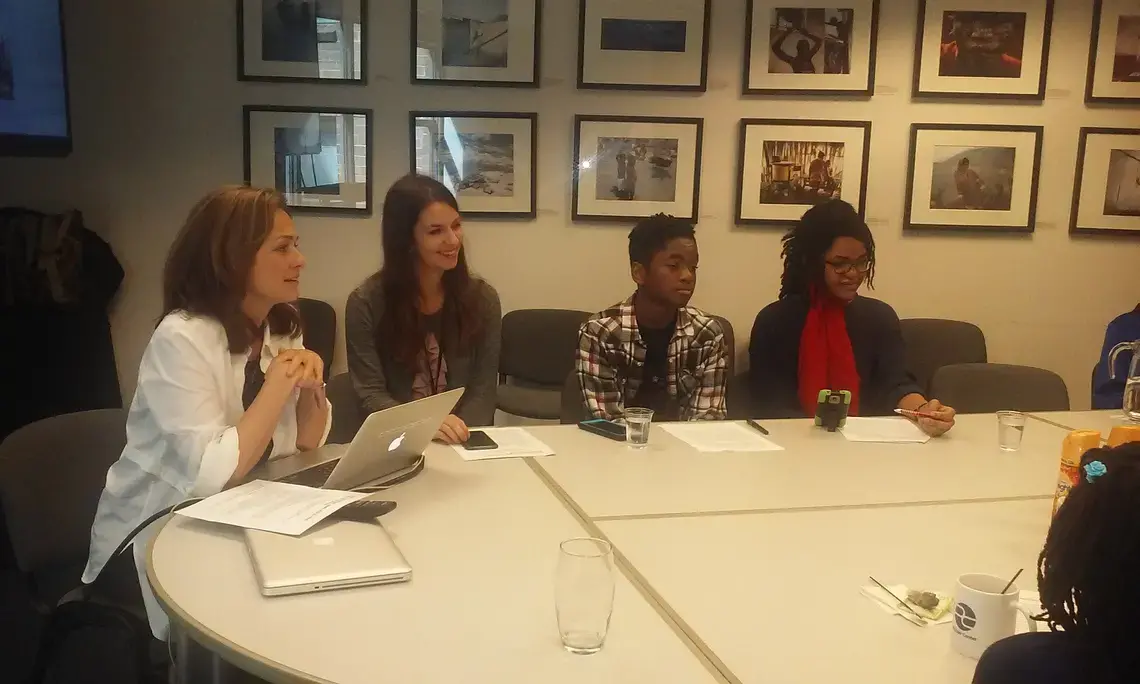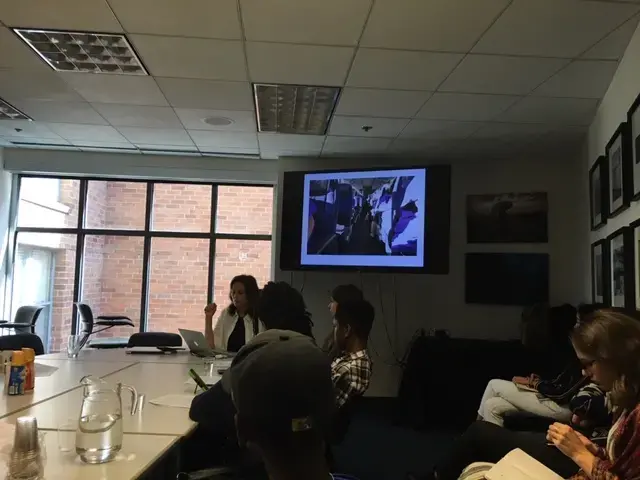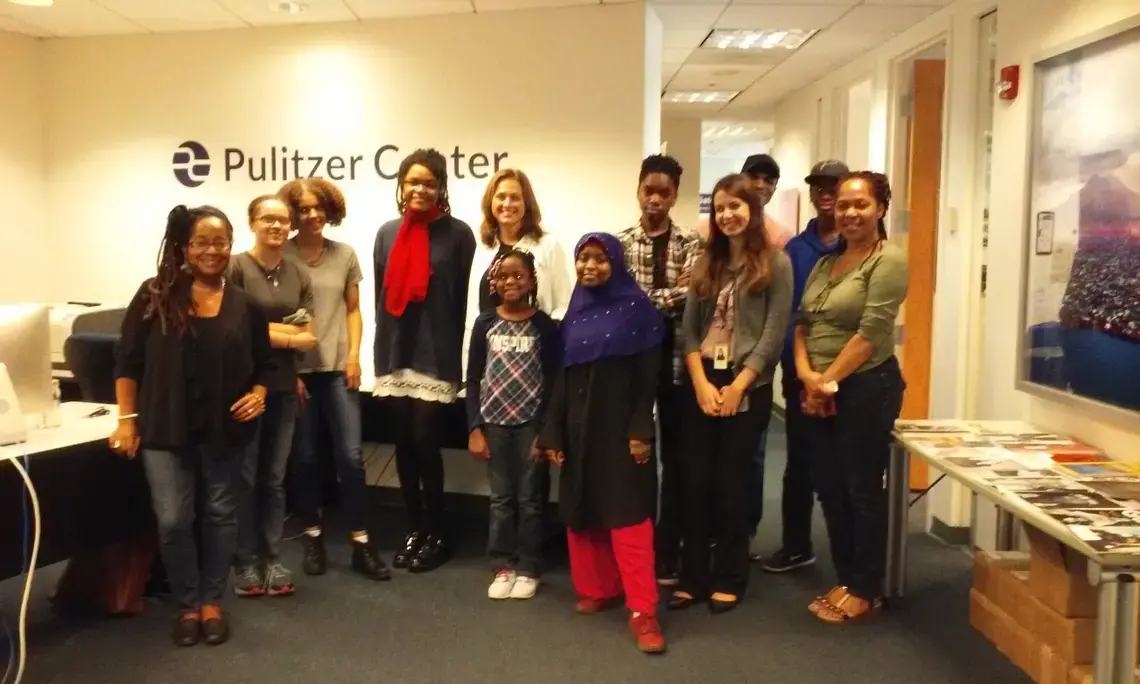“I had a one-hour experience with Jaime Joyce, and this space in time blew my mind,” wrote Molly Rufus, one of six homeschooled students who met with Joyce at the Pulitzer Center office as part of a two-day series of school engagements in September.
Joyce, the executive editor at TIME for Kids and a Pulitzer Center grantee, presented her project “Children of the Incarcerated,” which examines the challenges that children with incarcerated parents face and the programs that allow families to stay connected during periods of separation.
The workshop was organized with Culture at Home, an African-American homeschool support organization based in the D.C. area. Following the visit, the students participated in a writing workshop led by educator Pier Penic about how to write editorials that reflect what they learned from Joyce’s presentation.
In her essay titled “Education vs. Incarceration,” Molly Rufus analyzed the impact of zero-tolerance policies on the long-term success of students of color: “Zero-tolerance policies were built for protection against weapons and threatening behavior, but it's a policy that doesn't disallow racism in the fine lines. This isn't to say that brown and black people are always innocent, but it is to say they usually get suspended for truancy, talking back, or wearing saggy clothing. This is where racial bias comes in. The way people notice black and brown people more can be due to suspicion, unease, and aggression they feel toward them and expect from them. “
Grace Rufus stressed the importance of empathy in her essay, “Why homeschoolers should and do care about the school to prison pipeline”: “Once we understand these problems, once we can empathize and shoulder it as our own, we can help too. We can protest, we can raise awareness, we can write to our congressmen and women, we can try to grow up with a broader mindset and a determination to fix these problems. We can and will break out of these boxes. The boxes of stereotypes and lack of help where it’s needed, but these will only be fixed if we can work together. If we work together, all of us, regardless of backgrounds, race or differences in schooling.”
Reflecting on her past experiences at a public school in her essay, “The Future is Incarcerated,” Genevieve Hoyah wrote: “What will having an incarcerated parent, or simply living in a society that favors corporal punishment, do to the upcoming generations? I left public school but I cannot escape the ripple effects of mass incarceration. My future is going to include people affected, whether directly or indirectly, by incarceration. These people are my future roommates, friends, partners, co-workers, bosses, and the like. The emotional trauma that they are struggling with is something our society will have to deal with as a whole.”
Griffin Hoyah also connected personal experiences to Joyce’s presentation in his essay, “Freedom’s Capitalist Cannibals”: “As a young, black, male, I am the prime target for the prison system. I would be the one most likely to be referred to the School Resource Officer for correction. I used to attend public school where my teachers frequently complained to my parents about my behavior, even though I was not a difficult kid. My mother observed my classes regularly and decided that the teachers had poor classroom management and trouble relating to the black boys in the class. She refused to let the system treat me like one of the “usual suspects." While I might be safe from profiling and direct fear of incarceration while in my own home, when I am out in the world, the capitalist prison business still sees me as a stream of income.”
In her essay, “Zero Tolerance and 10x More Likely to Fail,” Grace Hoyah wrote: “Meeting Jaime Joyce from Time for Kids, we learned what it’s like to have a parent or other family members in prison. She also showed us a video about two girls who went on a long journey to see their mom who had been sentenced to about five years in prison. It was very sad for me to watch and see how much they missed their mom. If the schools don’t change their policies, then they could be sending little girls like these to prison in the future because of how they act at school.”
The essays can be read in their entirety below.
If you are interested in bringing this story to your classroom, please email [email protected].














